
Righteous jive for all you weedheads, moochers, b-girls, gassers, bandrats, triggermen, grifters, snowbirds, and long-gone daddies. 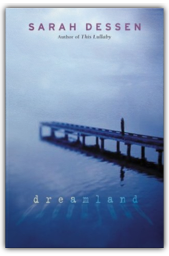
Strange, sleepy Rogerson, with his long brown dreads and brilliant green eyes, had seemed to Caitlin to be an open door. With him she could be anybody, not just the second-rate shadow of her older sister, Cass. But now she is drowning in the vacuum Cass left behind when she turned her back on her family's expectations by running off with a boyfriend. Caitlin wanders in a dream land of drugs and a nightmare of Rogerson's sudden fists, lost in her search for herself. 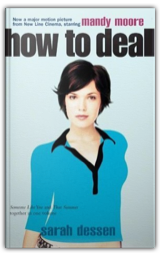
Rule #1: There are no rules 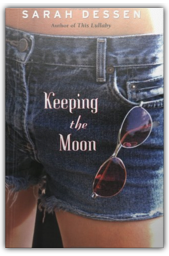
Fifteen-year-old Colie is spending the summer with her eccentric Aunt Mira while her mother travels. Formerly chubby and still insecure, Colie has built a shell around herself. But her summer with her aunt, her aunt's tenant Norman, and her friends at the Last Chance Diner&150teaches her some important lessons about friendship and learning to love yourself. 
Given the breadth of Anita Diamant's bestselling biblical epic, The Red Tent, it seems natural that her second novel has a much closer focus. Set in the small Massachusetts fishing town of Gloucester, Good Harbor is a slow-paced study of female friendship. Here Diamant can luxuriate in the development of just two principal characters: 59-year-old Kathleen Levine, a children's librarian who is undergoing radiation therapy for breast cancer, and a 42-year-old romance novelist, Joyce Tabachnik, who has bought a summer retreat in Gloucester in the hope of finally writing a "serious" book. The two meet at temple after a service presided over by a newly hired female rabbi. (What joy it must have been for Diamant, who chronicled so much oppression of Hebrew women in The Red Tent, to casually include the presence of female clergy.) Kathleen has no real confidante aside from her husband, Buddy; Joyce is facing estrangement from both her business-minded husband, Frank, and her soccer-obsessed daughter, Nina. What the women are lacking, they find in each other. As their intimacy grows, Diamant sometimes tells us what we already know, breaking into a conversation, for example, to announce how well things are going ("They smiled at each other. They were going to be okay."). This is a moving story nonetheless—short on incident, but with carefully drawn characters and fluid, matter-of-fact prose. —Regina Marler 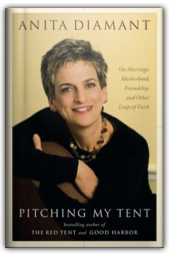
Following the enormous success of her two bestselling novels, The Red Tent and Good Harbor, award-winning author Anita Diamant delivers a book of intimate reflections on the milestones, revelations, and balancing acts of life as a wife, mother, friend, and member of a religious community. 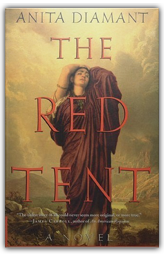
The red tent is the place where women gathered during their cycles of birthing, menses, and even illness. Like the conversations and mysteries held within this feminine tent, this sweeping piece of fiction offers an insider's look at the daily life of a biblical sorority of mothers and wives and their one and only daughter, Dinah. Told in the voice of Jacob's daughter Dinah (who only received a glimpse of recognition in the Book of Genesis), we are privy to the fascinating feminine characters who bled within the red tent. In a confiding and poetic voice, Dinah whispers stories of her four mothers, Rachel, Leah, Zilpah, and Bilhah—all wives to Jacob, and each one embodying unique feminine traits. As she reveals these sensual and emotionally charged stories we learn of birthing miracles, slaves, artisans, household gods, and sisterhood secrets. Eventually Dinah delves into her own saga of betrayals, grief, and a call to midwifery. |
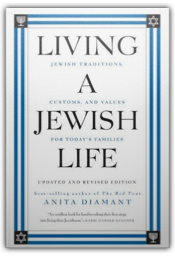
Living a Jewish Life describes Judaism as not just a contemplative or abstract system of thought but as a blueprint for living fully and honorably. This new edition builds on the classic guide, which has been a favorite among Jewish educators and students for years. Enriched with additional resources, including online resources, this updated guide also references recent changes in the modern Jewish community, and has served as a resource and guide for non–Jews as well as Jews. 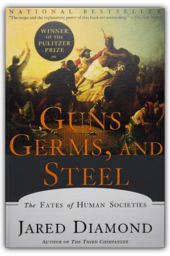
Explaining what William McNeill called The Rise of the West has become the central problem in the study of global history. In Guns, Germs, and Steel Jared Diamond presents the biologist's answer: geography, demography, and ecological happenstance. Diamond evenhandedly reviews human history on every continent since the Ice Age at a rate that emphasizes only the broadest movements of peoples and ideas. Yet his survey is binocular: one eye has the rather distant vision of the evolutionary biologist, while the other eye—and his heart—belongs to the people of New Guinea, where he has done field work for more than 30 years. 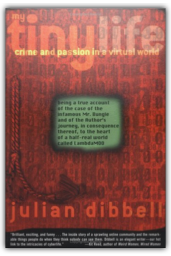
This is the story of one user's experience at a virtual-reality community called LambdaMOO. A MOO—short for multiuser dungeon, object oriented—is a virtual place where participants can construct human-like graphical representations of themselves to interact in a simulated world. Author Julian Dibbell begins by relating the facts surrounding the case of Mr. Bungle, a character who committed the crime of "virtual rape" in this fantastic electronic world, shocking LambdaMOO's members. However, the thread of discussion about this case is minimal and the book ultimately becomes Dibbell's diary of his "research" of this virtual world, which grows gradually more obsessive, and how it affects his RL (real life). 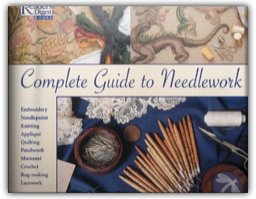
Embroidery, needlepoint, knitting, appliqué, quilting, patchwork, crochet, rug-making, macramé, and lacework-all taught through step-by-step instructions and photographs and drawings. A reference for the beginner and expert alike. 
Includes recipes for sandwiches, soups, salads, and desserts with hints on cooking techniques and handling kitchen equipment. 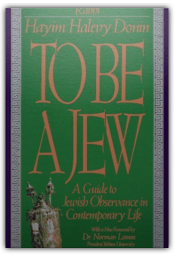
To Be a Jew, Rabbi Hayim Halevy Donin's classic guide to Jewish life, philosophy, and law has guided generations of Americans, Europeans, and Israelis to discover the treasures of their own religious traditions. First published in 1972, the book still stands as a reliable, practical and versatile resource for everyone from young girls preparing for bat mitzvah to old men returning to their spiritual roots. The book begins with an overview of Judaism's basic credo (including chapters on Israel's people, land, God, and Torah), moves on to describe the laws governing Jews' daily lives, the Jewish calendar, and "The Special Occasions of Life" from birth to death and mourning. One great strength of To Be a Jew is its blending of folk wisdom and scholarly learning. Rabbi Donin not only describes what right belief and righteous action look like but provides a rationale for these observances that engages and embraces the basic conditions of modern life. —Michael Joseph Gross |

My Library
Collection Total:
1390 Items
1390 Items
Last Updated:
Mar 22, 2009
Mar 22, 2009


 Made with Delicious Library
Made with Delicious Library